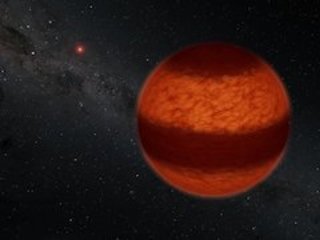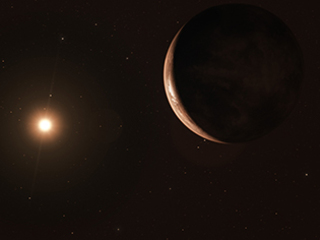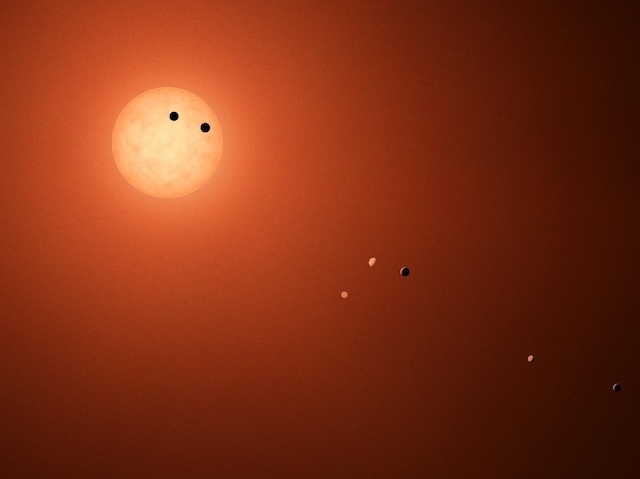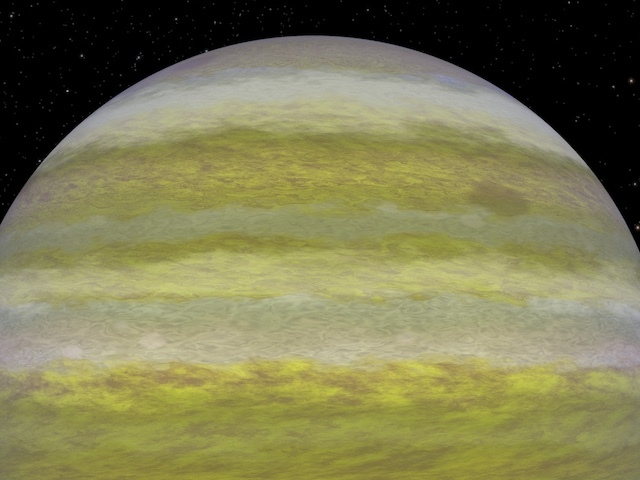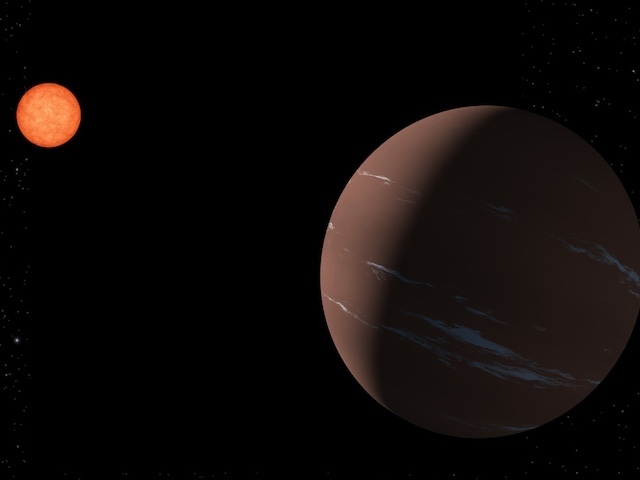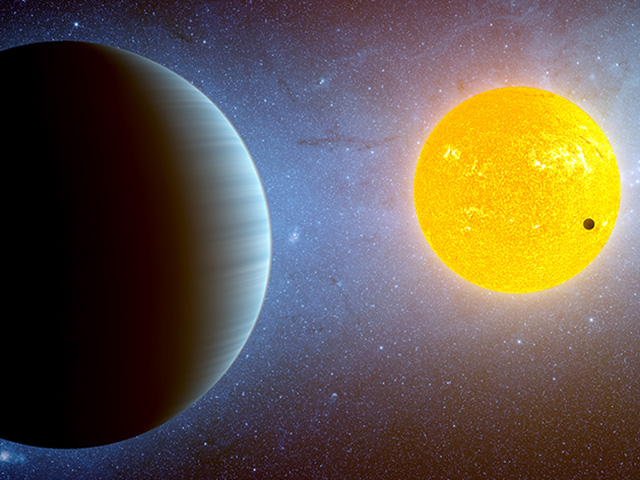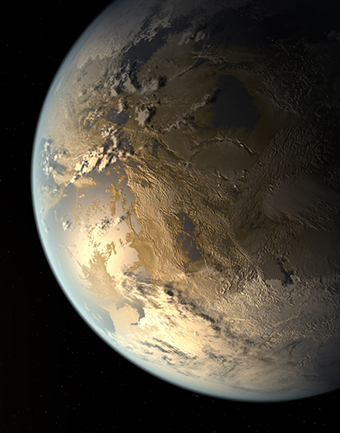News | December 12, 2023
Seeing, Believing: 15 Years of Exoplanet Images
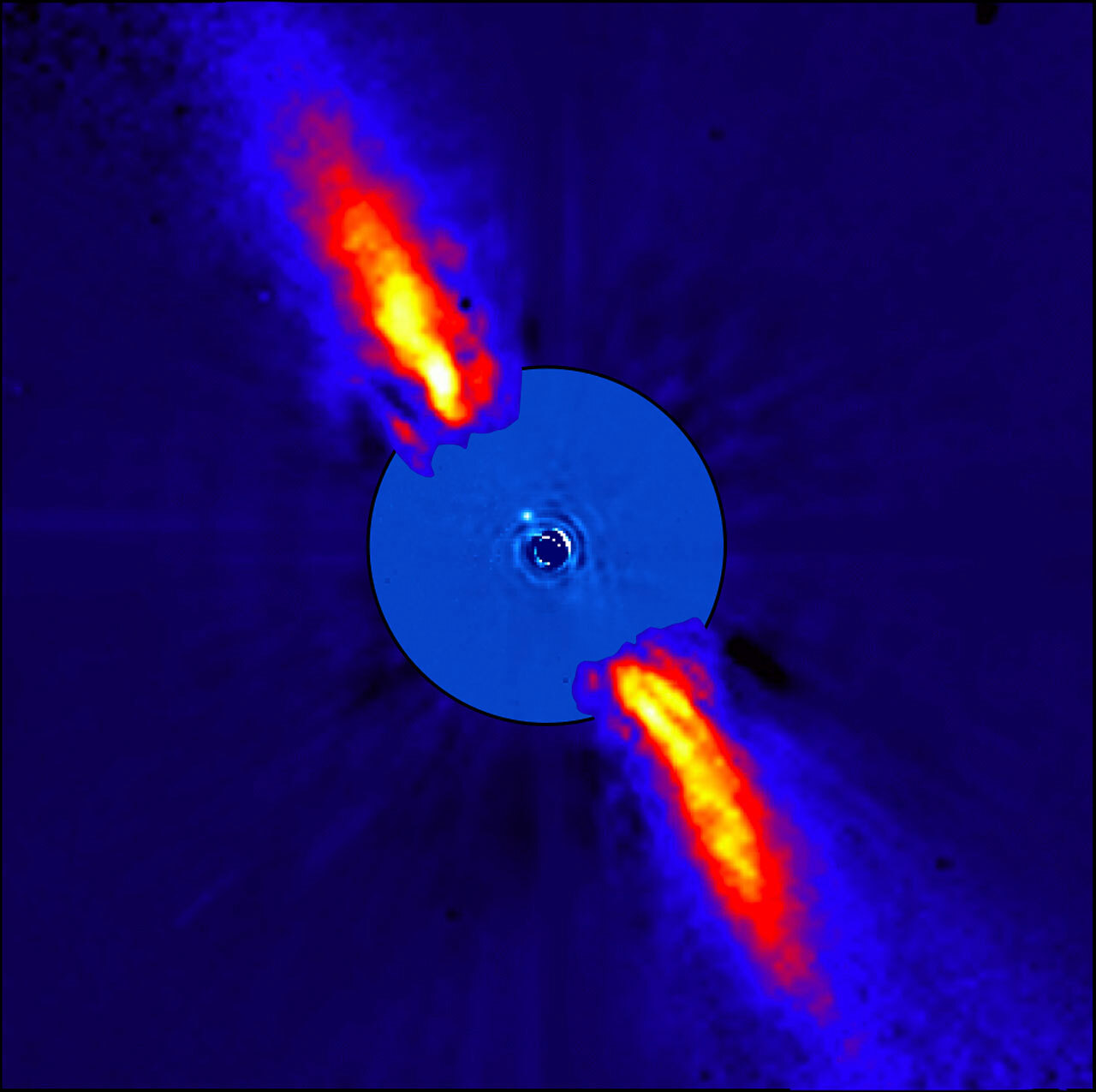
A team of French astronomers used the European Southern Observatory's Very Large Telescope to discover a giant exoplanet, Beta Pictoris b, resulting in this iconic direct image. Image credit: ESO/A.-M. Lagrange et al.
First there was a gloriously dusty disk. Then the traceable tracks of “exocomets.” But 15 years ago this fall, the star system Beta Pictoris yielded one of the most iconic pictures in astrophysics: a direct image of a planet orbiting another star.
The young, bright star, some 63 light-years distant and visible to the naked eye, all but overwhelmed the faint light of the planet. When astronomers, using a European Southern Observatory telescope, subtracted the starlight, all that remained of the planet was a tiny dot, a few pixels. But it was enough to throw open a new window on direct imaging.
“After that, I knew what I wanted to do in astronomy,” said Marie Ygouf, a researcher who specializes in direct imaging of exoplanets – planets around other stars – at NASA’s Jet Propulsion Laboratory in Southern California.
An undergraduate when she first saw the image of the planet, called Beta Pictoris b, Ygouf said she was awestruck.
“It was so exciting to try to take pictures of exoplanets, to try to detect life on another planet,” she said. “I was sold.”
Today the Beta Pictoris system, called Beta Pic for short, is famous for the early, breathtaking images of its surrounding disk of dusty debris, and for abundant evidence of exocomets, or comets detected in star systems other than our own. The discovery of a second planet in the system, Beta Pictoris c, was revealed to much scientific excitement in 2018.
It is, as one astronomer said, the gift that keeps on giving.
But the scientists deeply involved in early observations of the system had a bit of an uphill struggle convincing some colleagues that their groundbreaking discoveries were real, said Anne-Marie Lagrange, an astronomer at LESIA, Observatoire de Paris, who has been working to understand the system for more than 30 years.
As an intern, Lagrange began her work on Beta Pic in the mid-1980s, just after the disk image made its big splash. Among her research milestones was the discovery, in the late 1980s, of massive clumps of gas falling onto the surface of the system’s central star – and at high rates of speed, up to 200 miles (350 kilometers) per second.
Lagrange and her fellow researchers relied on observations from the IUE (International Ultraviolet Explorer) satellite – “an ancestor” of NASA’s Hubble Space Telescope, she said – to propose that the infalling gas was caused by evaporating comets.
“They were the first exocomets [observed] around another star,” she said. “At the beginning, many people were laughing at it.” The findings held up, and the presence of exocomets in the system was confirmed by further observations announced in 2022.
In the mid 1990s, relying on the recently launched Hubble as well as increasingly sophisticated ground-based instruments, scientists realized that the debris disk around Beta Pictoris was warped, like a vinyl record left too long in the Sun.
Computer modeling results suggested the warp was a gravitational skew caused by an orbiting planet. And in 2008, after long effort, Lagrange and her team hit paydirt: a direct image of the giant, gaseous planet, so young it was still glowing from its recent formation.
“The nice thing is, we predicted it 10 years before,” she said.
Still a relatively minor player in the detection of exoplanets, direct imaging’s role will expand in the years and decades to come, promising deep insights into the nature of distant planets as technology improves. But even then, each “image” of a planet will still be just a handful of pixels.
That might sound disappointing, especially in the era of spectacular sci-fi movie effects. If we find an “Earth-like” planet, we won’t see continents and oceans – at least not yet. But that tiny dot of light will contain a flood of information: details of the planet’s atmosphere, clouds, temperature, and perhaps even signs of some form of life.
By splitting the light from that tiny dot into a spectrum of colors, scientists can spot missing lines from that spectrum – slices of light absorbed by molecules in the planet’s atmosphere as starlight is reflected from the atmosphere or surface. The missing slices correspond to specific gases and molecules in the planet’s atmosphere, a detection method known as spectroscopy.
NASA’s James Webb Space Telescope is already using onboard spectrographs to tease out the components of exoplanet atmospheres. In the years ahead, the agency’s Nancy Grace Roman Space Telescope, to be launched by May 2027, is designed to study the cloudy atmospheres of mature, Jupiter-sized exoplanets. The Habitable Worlds Observatory, a mission concept now in the early planning stages, is expected to refine this technology, to measure the atmospheric composition of small, rocky planets like our own, all from those little dots of directly imaged exoplanets.
Ygouf is part of the project science team for the Roman telescope’s coronagraph instrument, which will block the glare from a parent star so the light from its planets can be detected. Meant to be a technology demonstration, the instrument includes two flexible mirrors to correct distortions in the light caused by the instrument and by the telescope itself.
She says the direct imaging techniques that caught fire with Beta Pictoris could someday solve one of the ultimate mysteries.
“With this technique, we may be able to answer that very fundamental question: Is there any life in the universe outside of Earth?” she said. “It’s astonishing, incredible, that from a few pixels we’ll be able to learn so many things about a planet: whether those planets are terrestrial or gaseous, whether they have an atmosphere or not. If it’s done right, in the future we may be able to create pretty maps of those planets, seeing potential clouds. It may be a few pixels, but [there’s] so much information you can get from that.”

